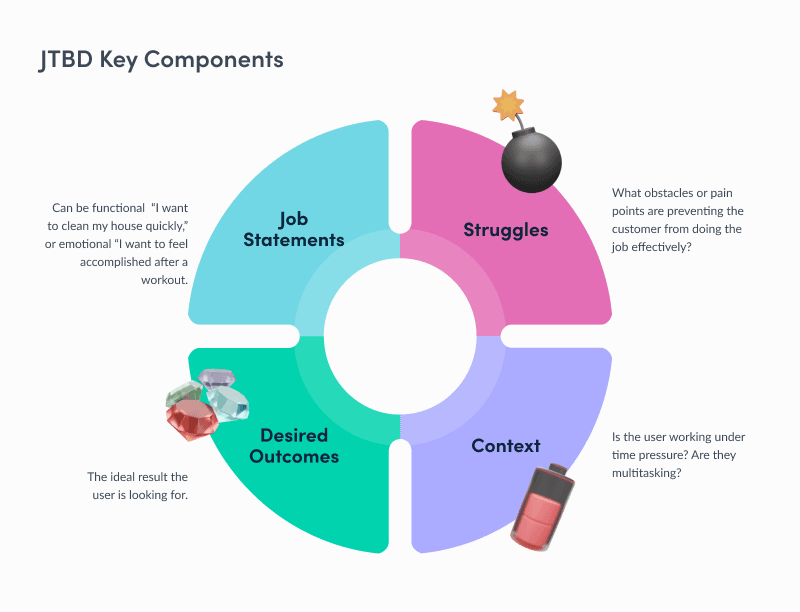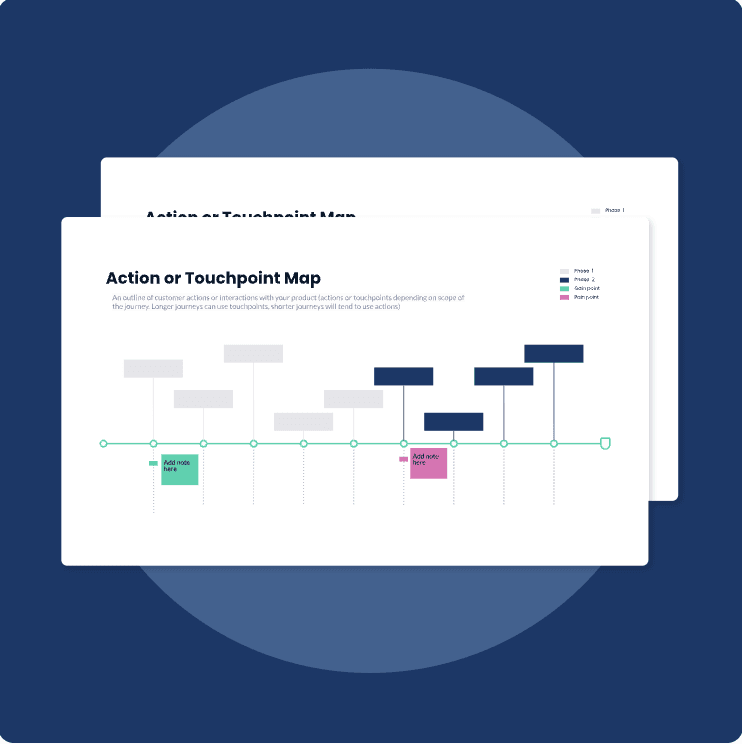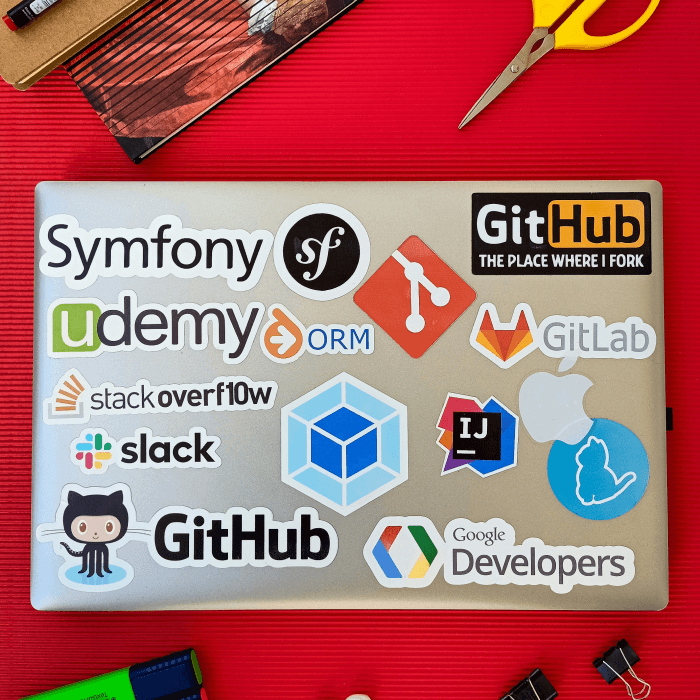Updated: January 10, 2025- 13 min read
In the late '90s, Clayton Christensen set out to answer a surprisingly simple question: why do people buy what they buy?
What he found changed the way companies think about innovation. That insight led to the creation of the Jobs to Be Done (JTBD) framework, and it’s been helping companies like Apple, Intercom, and even Airbnb create products that solve real problems, not just tick boxes.
Imagine you're working on a product and instead of asking, "What new feature can we add?" you start asking, "What job is the customer trying to get done with this product?"
That’s exactly the shift in mindset JTBD offers. It’s the reason it’s become a go-to for product discovery across the globe. This framework digs into the motivations behind customers’ decisions, helping teams build products that matter.
In this article, we’re not going to linger too long on theory. After covering the essentials, we’ll dive straight into how you can use the Jobs to Be Done framework in your own product management process, with real-world examples to guide the way.
Opportunity Solution Tree Template
Branch out and discover something new with the opportunity solution tree. Visualize the product discovery process to build features that matter!
Get the template
What Is Jobs to be Done Theory?
Market research is knowing who your audience is and data analytics is knowing what they actually do.
— Ryan Daly Gallardo, SVP, Consumer Products at Dow Jones, on The Product Podcast
The Jobs to Be Done (JTBD) theory is a way of understanding customer behavior that shifts the focus from what a product is to why it’s used. It’s based on the idea that people don’t just buy products — they hire them to do specific jobs.

The theory was popularized by Clayton Christensen, a Harvard Business School professor, who introduced it in the context of innovation. He wanted to explain why some new products succeeded while others failed.
Through his research, he found that traditional methods of segmenting markets by demographics or product features often missed the mark. What really drives success is understanding the job a customer is trying to get done. For example, someone doesn't buy a drill because they want a drill — they buy it because they need a hole in the wall.
What Is Jobs to Be Done Methodology?
The Jobs to Be Done (JTBD) methodology is a practical framework that helps teams focus on what customers are actually trying to achieve when they use a product.
Instead of centering on features or specs, this methodology asks, "What job is the customer hiring this product to do?" It’s about understanding the user motivation and designing solutions that help them accomplish their most important goals.
How Teams Use the JTBD Framework
In a real-world setting, product teams use the JTBD framework to guide decisions during product discovery, product design, and development. The idea is to dig deep into user behavior, uncover why customers choose a product, and how it helps them solve a problem or achieve an outcome.
For instance, if a company is creating a fitness app, they don't just focus on adding features like timers or trackers. Instead, using the JTBD methodology, they ask: Why do people want a fitness app?
Maybe it’s to stay healthy, maybe it’s to prepare for an event, or maybe it’s to feel more confident in their daily life. Understanding this “job” helps the team build an app that addresses those specific goals, not just adds more functionality.
Key Components of the JTBD Framework

Job Statements: These are the core “jobs” that users want to achieve. It could be functional (e.g., “I want to clean my house quickly”) or emotional (e.g., “I want to feel accomplished after a workout”). Writing these job statements clearly helps teams focus on real user outcomes.
Struggles: What obstacles or pain points are preventing the customer from doing the job effectively? These are crucial for product managers to understand so they can design solutions that alleviate these frustrations.
Context: This is the environment or situation in which the job is done. Is the user working under time pressure? Are they multitasking? These factors influence how the solution should be designed.
Desired Outcomes: The ideal result the user is looking for. These outcomes guide how the product is shaped and what success looks like in the user’s eyes.
Teams use user research methods often in the form of interviews, customer observations, and surveys to collect data. From there, they build product features that are laser-focused on getting the job done.
For example, if users are "hiring" an app to stay organized, the development team can ensure features like notifications, task lists, and prioritization tools are included to help the user complete that job smoothly. Having a ‘jobs to be done mindset’ allows teams to create a solution that fits into the customer's life, rather than asking them to adapt to the product.
In short, the JTBD framework ensures that product teams stay grounded in the real-world needs of their users, helping them build products that people actually need and love to use.
10 Practical Steps to Implement JTBD

Implementing the Jobs-to-be-Done (JTBD) framework in real-world product teams can bring clarity and focus to product development, but it requires intentional effort and collaboration across the organization. Here’s how product teams can adopt and integrate the JTBD framework into their daily workflow, from team structure to everyday scenarios:
1. Start with Leadership Buy-In
If you want to implement the JTBD framework, you’ll need support from your leaders. Why? Because this approach requires a shift in thinking. It's not just about adding features but focusing on user outcomes. Leadership support ensures that everyone is aligned around the framework and resources are allocated to support this shift.
Tip: Present JTBD to your product leadership team as a way to align product development with user success and market growth. Use case studies from other companies that have successfully implemented JTBD. Even better, show how it stands compared to other product development frameworks.
2. Create a Cross-Functional JTBD Team
JTBD is not something that can be carried out by one person or single department. To implement this framework effectively, you’ll need a cross-functional collaboration. This team should include product managers, designers, marketers, customer support, and even engineers. To understand the "job" the customer is hiring the product to do requires perspectives from more areas of the business.
How It Works: Product managers can identify opportunities, designers can translate those jobs into intuitive UX/UI, engineers can ensure technical feasibility, and customer support can provide insights on user pain points.
Tip: Schedule regular cross-functional meetings or Agile retros to discuss JTBD insights and how they translate into the product roadmap.
3. Job Interviews and Research Are Non-Negotiable
At the heart of the JTBD framework are customer interviews. Teams need to talk to users to understand the specific job they’re trying to get done with your product. These interviews go beyond typical user feedback — they aim to understand motivations, pain points, and desired outcomes.
How to Apply It: Structure interviews to ask not only what users do, but why they do it. For example, "Why did you decide to use our product in that way?" or "What alternatives did you consider for this job?"
Pro Tip: Don’t just interview current users. Speak to former users, competitors’ users, and people who have never used your product. This gives you a broader understanding of the jobs your product could fulfill.
4. Use Jobs as a Compass for Prioritization
Once you’ve gathered enough JTBD insights, use them to inform your product roadmap or product launch plan. Each new feature or update should be tied to a specific “job” that your product is helping the user accomplish. This helps teams avoid the feature creep that comes from chasing shiny objects. Remember, meaningful outcomes — that’s what you’re after.
Scenario: Suppose your product team is considering adding a new feature to an email marketing tool. Instead of asking, "What cool feature can we add?" the JTBD approach would ask, "What job are marketers trying to accomplish when they send emails? Is this feature going to help them do that better or faster?"
Tip: Rank new features by how well they solve critical jobs. This helps product teams prioritize what’s truly important.
5. Align Job Statements with Customer Segments
In many organizations, teams work in silos: marketing targets specific product personas, product teams focus on user stories, and customer success is left to deal with customer complaints. JTBD can act as the glue that binds these segments. A job statement focuses on what users are trying to achieve rather than who they are.
How to Use It: Instead of creating features for “tech-savvy millennials,” you create them for people who want to “streamline their workday.” Job statements guide your product, marketing, and customer support teams to focus on a universal truth rather than personas.
6. Examine JTBD in Real-World Scenarios
Let’s break down how the JTBD framework might work in common product management scenarios:
Scenario 1: Product Feature Overload
Your team keeps adding features, but product adoption is low. With the JTBD framework, you start interviewing users and discover that they're “hiring” your product to simplify their workflow, not complicate it. As a result, you cut unnecessary features and focus on streamlining the most critical ones.
Scenario 2: New Product Launch
Your company is developing a new SaaS product. Instead of jumping straight into development, the team conducts JTBD interviews to understand the core job that potential users are trying to accomplish. You uncover that the job is to “automate repetitive tasks” rather than just “track work.” This insight shifts the product vision, and the team prioritizes automation features for the first launch.
7. Embed JTBD in Your Team’s Workflow
For JTBD to truly work, it needs to be embedded in your everyday processes. Here are a few ways to make that happen:
Product Planning: Include “job statements” as part of every feature request or user story. For example, “As a user, I need to [job], so I can [desired outcome].”
Design Sprints: Focus on solving specific “jobs” during design sprints rather than just improving UI. Product designers can focus on creating solutions that meet the job's outcome.
Post-Launch Evaluations: After launching a new feature or update, evaluate its success based on how well it helps users complete their job, rather than just adoption numbers. Use metrics like time saved, pain points removed, or workflow streamlined.
8. Rethink Metrics
Classical product metrics like user engagement or conversion rates are useful. Still, the JTBD framework encourages teams to go deeper. Measure how effectively your product helps users complete the job they hired it to do.
Key JTBD Metrics:
How much time was saved by using the product?
Did the product solve the user’s pain points?
How many steps did the user have to take to complete the job?
What alternative products are they avoiding by choosing yours?
9. Train Your Teams
Everyone in the organization needs to understand the value of the JTBD framework. Hold workshops, bring in experts, and provide training sessions for your teams to learn how to conduct JTBD interviews.
They need to be able to analyze insights and translate findings into actionable features.
10. Iterate and Refine
The JTBD framework is not a “set it and forget it” process. Teams need to continuously refine their understanding of the jobs users are trying to accomplish. User needs evolve, and so should your understanding of those needs. Make it a habit to revisit and update your job statements as part of your regular sprint planning or Agile retrospective meetings.
User Flow Template
Include design early in the Product process with these two user flow diagram templates.
Get the template
Examples of Companies that Use the JTBD Approach
Here are two real-world success stories of companies that used the Jobs-to-be-Done (JTBD) framework to overcome challenges and gain actionable insights:
Cordis Corporation: Shifting Focus to What Really Matters
Cordis, a medical device manufacturer, was once struggling to find its place in the highly competitive market of angioplasty balloons. As Christensen shares in his book, Competing Against Luck, at the time, they held a 1% market share. The problem?
Cordis was focusing on making a better balloon but they lacked the bigger picture: What are the "jobs" that doctors and medical professionals are hiring these devices to do?
By applying JTBD, Cordis shifted their perspective. They stopped looking at the product from a purely technical standpoint and started digging into the actual outcomes their customers (doctors, surgeons, and hospitals) needed to achieve during medical procedures. They realized that the real "job" was to improve the success rates of angioplasty procedures and reduce risks, not just provide another generic balloon.
With these insights, Cordis launched 19 new products that targeted these unmet needs. Cordis grew its market share from 1% to over 20%, and all 19 products became top sellers. This JTBD-driven approach allowed Cordis to reframe their product development and ultimately dominate the market.
Microsoft Software Assurance: From Updates to Outcomes
This success story has been detailed in Jobs to be Done: Theory to Practice by Anthony Ulwick, who highlights how Microsoft used JTBD to refine its service.
Microsoft faced a serious issue with its Software Assurance program. Customers weren’t seeing the clear value, and the program was underperforming. Instead of simply offering software updates, Microsoft took a step back and implemented the JTBD framework.
Through JTBD, Microsoft discovered that customers weren’t just looking for updates — they were looking to optimize their IT budgets, manage risk, and reduce disruptions within their organizations.
By understanding these deeper jobs, Microsoft completely rethought the Software Assurance program. They redesigned it to directly address these critical needs, offering services that helped customers with long-term IT management, security, and budget predictability.
The result? Microsoft saw a massive 100% year-over-year revenue increase in their Software Assurance program. By using JTBD, Microsoft aligned the program more closely with the real outcomes customers valued, turning a previously lackluster offering into a vital component of their business model.
Give JTBD a Try
Relying on gut instinct alone isn’t enough to create a truly impactful product. Yet, so many of us rely on it.
The Jobs to Be Done framework helps you take a step back and look at your product from a fresh perspective. By digging into the “jobs” your product is hired to do, you might uncover insights that challenge these gut feelings, save development costs, and, most importantly, prevent a product flop.
The trade-off? A small learning curve and a little bit of cross-functional teamwork for seriously important “Aha!” moments — the kind that can turn a mediocre product into something indispensable.
So, the next time you're facing product prioritization, ask yourself: what job are we really solving? You may just find that small shifts in focus can lead to big wins.
Free Customer Journey Map
Put yourself in your customers’ shoes to find the problems in your user experience (and uncover opportunities to solve them).
Download here
Updated: January 10, 2025





